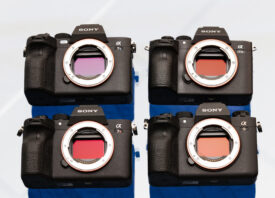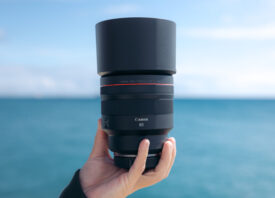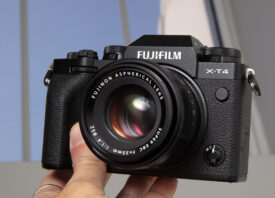Search this site
New Year, New Gear: MPB Used Cameras Are The Future (Sponsored)

Brand-new research from MPB and Retail Economics reveals that 71% of consumers bought or sold used goods in the last year, with that number jumping to 84% among millennials. The reasons are clear: cost-savings ranked as number one, while sustainability concerns came in second. The report suggests a significant shift in the way people shop, and with MPB recirculating a whopping 500,000 items of photographic equipment in 2023, it’s never been easier to change the way we buy, sell, and upgrade our gear.

According to MPB’s research, most consumers (84%) recognize the sustainability benefits of buying used. Embracing circularity in tech is one (very easy) way for photographers to reduce their impact on the environment. By getting the most out of our gear and keeping it in circulation, we cut down on e-waste and save money. So why isn’t everyone buying and selling used?
A previous study from MPB might have the answer: about 10% of adults surveyed don’t sell their used tech because they don’t know how to do it. Nearly 15% say they “don’t have enough time.” Respondents under 35 were more likely to view selling their used gear as “too much effort.”
MPB—the largest platform for buying, selling, and trading used gear online—solves all of these concerns. Anyone can go on the website, enter their camera model and condition, and receive a free instant quote. From there, it’s as easy as boxing up your camera. MPB will pay for shipping and inspect your gear for you. Accept their offer, and you get paid.

Buying from MPB is just as simple, partly because of the sheer number of options available on the website. On average, used cameras cost a third less than their new counterparts. Because every item is inspected by a professional, you know the condition rating is accurate and trustworthy. One reason many people—including this editor from The New York Times’ Wirecutter—prefer buying from MPB over its competitors is that every item is photographed individually, so what you see is what you get.
MPB prioritizes sustainability throughout its operations: as of a recent report, the company sourced almost half (45%) of its energy from renewable sources and sent zero waste to landfills. MPB has set a goal of transitioning to 100% renewable energy by 2030 and becoming circular for all purchased and leased goods used in its operations by 2025. Over the years, the platform has contributed more than $70,000—and counting—to One Tree Planted, a non-profit working on global reforestation.
Beyond the top two reasons for choosing to buy and sell used—cost and sustainability—MPB’s report also highlights potential social and emotional benefits, like community-building. By selling our used gear and paying it forward, we can make photography more affordable and accessible to everyone.

Shoppers of used items also value unique finds and treasures. For photographers, MPB has plenty of those: As of this writing, the platform has a Leica 50mm f/0.95 Noctilux (the highest-speed aspherical lens in the world), a Hasselblad X2D 100c medium format camera, a Nikon Nikkor Z 58mm f/0.95 Noct lens (known for its magical bokeh), and two coveted Leica Summilux-C cine lenses—all available for a fraction of the price of new.
With all these motivators in mind, it’s no surprise that many more people are choosing to buy used than just a few years ago. MPB’s latest report further finds that more than a third of consumers surveyed increased the frequency of their used purchases over the last year, with 19% agreeing that they consider this shift to be a permanent change.
Across the US, UK, France, and Germany, the report forecasts an 80% growth in the “recommerce” (i.e. used goods) market by 2028. Further emphasizing the role of “recommerce” in everyday shopping behavior is the fact that 63% of used shoppers made a purchase at least once a month.

The widespread adoption of buying and selling used means that the latest and greatest technology will become more accessible with every passing year—and we’ll send far less waste to landfills, too. It’s good news for our wallets; it’s good news for the planet, and it’s good news for the photography industry as a whole.
This article was sponsored by our friends at MPB.
Further reading:
Saving Money with MPB Camera Accessories
Pause and Buy Used: Why We Love MPB Used Cameras



